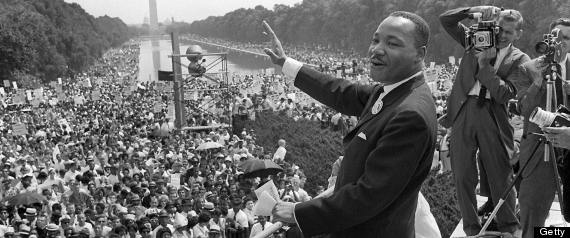March on Washington Resources

The year 2023 marked the 60th anniversary of one of the most historic moments in United States history – the March on Washington for Jobs and Freedom. On August 28, 1963, approximately 250,000 people participated in the march, which is considered to be one of the largest peaceful political rallies for human rights in history.
The Institute worked to make a special contribution to this commemoration by publishing lesson plans and materials that K-12 teachers across the country can use in their classrooms to teach about this historic event, as well as a Shanker brief on one of the main organizers of the march, Bayard Rustin.
See here for an ASI video interview with some of the few surviving organizers of the 1963 March.
Shanker Brief
What Would Bayard Rustin Do?
A brief by Eric Chenoweth
Middle School Materials
Economic Causes of the March on Washington
Using data from the US Bureau of Labor Statistics about unemployment rates in 1963, students will determine possible economic causes for the march.
March Logistics Then and Now
In this lesson, students analyze the organizational and logistical tasks that needed to be accomplished to make the march possible and determine how those tasks could be completed today.
Who Was Bayard Rustin?
In this activity, students learn about Bayard Rustin and explore why his involvement in the march is largely forgotten in American history.
Leadership at the March through Music and Speeches
In this lesson from PBS News Hour Extra, students decide if the goals of the march were adequately addressed through the many songs and speeches presented during the event.
Racial Equality: How Far Have We Come and How Far Do We Have To Go?
This series of lessons from PBS News Hour Extra asks students to consider if racial equality has been achieved in the 50 years since the March on Washington.
High School Materials
Heart of the Matter
In this activity, students will differentiate between the popular memory of the march and what actually happened.
Leaders for Today
Through careful research of the contributions and qualities of A. Philip Randolph, Bayard Rustin, Norman Hill and Rachelle Horowitz, students will determine if the organizers of the march should be considered role models for today.
Dream Under Development
In this lesson, students compare Dr. King’s prepared version of his iconic speech with the one he actually delivered and form opinions about why he may have changed it.
Strategizing for Freedom
Students research Booker T. Washington, W.E.B. DuBois, Marcus Garvey and A. Philip Randolph’s strategies for advancing the African-American freedom struggle and decide which strategy was most effective.
Making the Case for Equality: A Comparison
In this activity, students decide whether Martin Luther King Jr.’s “I Have A Dream” speech or the trial closing argument of Atticus Finch in To Kill A Mockingbird makes a more persuasive case for overcoming racism.
March on Washington: A Time for Change
This lesson plan and interactive timeline from PBS News Hour Extra displays the sequence of events leading up to the iconic March on Washington, who was involved in the march and what the organizers of the march hoped to achieve.
